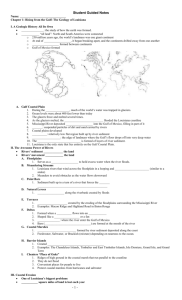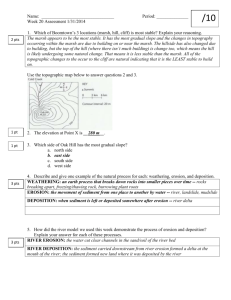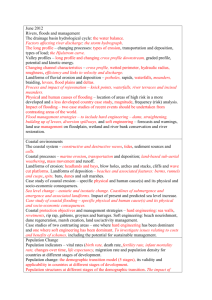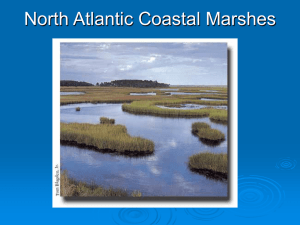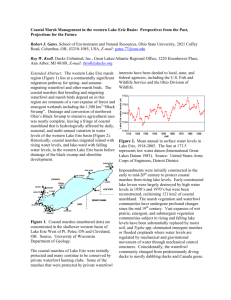Close Read on Coastal Erosion (due 9/8/15)
advertisement
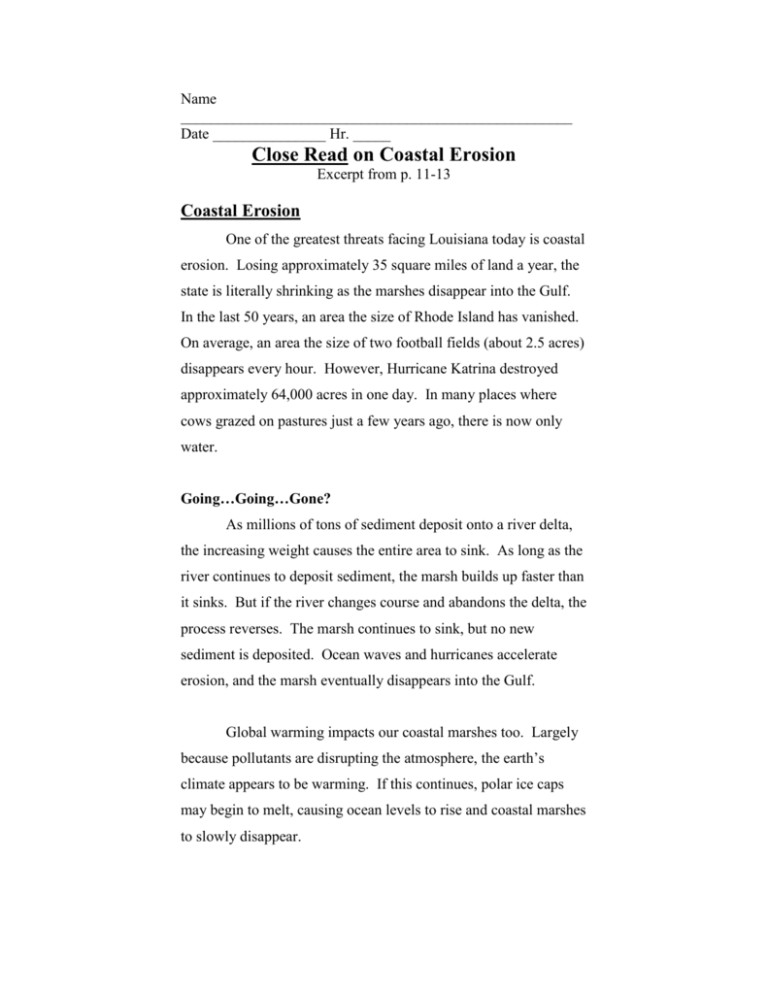
Name ____________________________________________________ Date _______________ Hr. _____ Close Read on Coastal Erosion Excerpt from p. 11-13 Coastal Erosion One of the greatest threats facing Louisiana today is coastal erosion. Losing approximately 35 square miles of land a year, the state is literally shrinking as the marshes disappear into the Gulf. In the last 50 years, an area the size of Rhode Island has vanished. On average, an area the size of two football fields (about 2.5 acres) disappears every hour. However, Hurricane Katrina destroyed approximately 64,000 acres in one day. In many places where cows grazed on pastures just a few years ago, there is now only water. Going…Going…Gone? As millions of tons of sediment deposit onto a river delta, the increasing weight causes the entire area to sink. As long as the river continues to deposit sediment, the marsh builds up faster than it sinks. But if the river changes course and abandons the delta, the process reverses. The marsh continues to sink, but no new sediment is deposited. Ocean waves and hurricanes accelerate erosion, and the marsh eventually disappears into the Gulf. Global warming impacts our coastal marshes too. Largely because pollutants are disrupting the atmosphere, the earth’s climate appears to be warming. If this continues, polar ice caps may begin to melt, causing ocean levels to rise and coastal marshes to slowly disappear. Despite these naturally destructive forces, Louisiana’s coastal marshes remained healthy and stable until the 20th century. Though marshes were destroyed in some areas, river sediment produced new marshland in others. Erosion is actually a natural process, but human activity has accelerated it dramatically. Human Interference About 100 years ago, human activity began accelerating the natural erosion process. Extensive levee systems were constructed along rivers for flood control. These levees extend to the Gulf and keep the rivers flowing within their channels. As a result, the rivers can no longer overflow their natural levees to deposit fresh sediment in the coastal marsh. Instead, the rivers shoot the sediment straight into the Gulf’s deep water. New deposits of sediment are no longer available to refresh the marshland. Another problem is that less sediment reaches the Gulf today than in earlier years. Rivers have been dammed to make reservoirs, and these dams trap sediment. In fact, only about half as much sediment reaches the Gulf today as did 100 years ago. The search for oil is another major cause of coastal erosion. Numerous canals and pipelines have been constructed in the coastal marshes to extract oil. These often allow saltwater intrusion. Saltwater from the Gulf of Mexico moves into the marshes along these avenues and kills the marsh grasses that hold the soil in place. Also, vast holes created by oil drilling lie under the crust alone cannot support the weight of the marsh, so it steadily sinks. Slowing Coastal Erosion Measures are being taken to stop coastal erosion. Grasses have been planted in some areas to help hold the soil in place, and sand is being pumped onto barrier islands to keep them from eroding away. In 1991, the U.S. Army Corps of Engineers completed the Caernarvon Diversion Project at a cost of $26 million. Located 15 miles downstream from New Orleans, this structure allows Mississippi River water to flow through the levees into coastal marshes. Twenty-three miles upstream from New Orleans is the Davis Pond Freshwater Diversion. Completed in 2002 at a cost of $120 million, the project allows Mississippi River water to flow into Barataria Bay. Over time the sediment-rich Mississippi water should help rebuild the marshes in those areas.


